Displaced people: Why are more fleeing home than ever before?
- Published
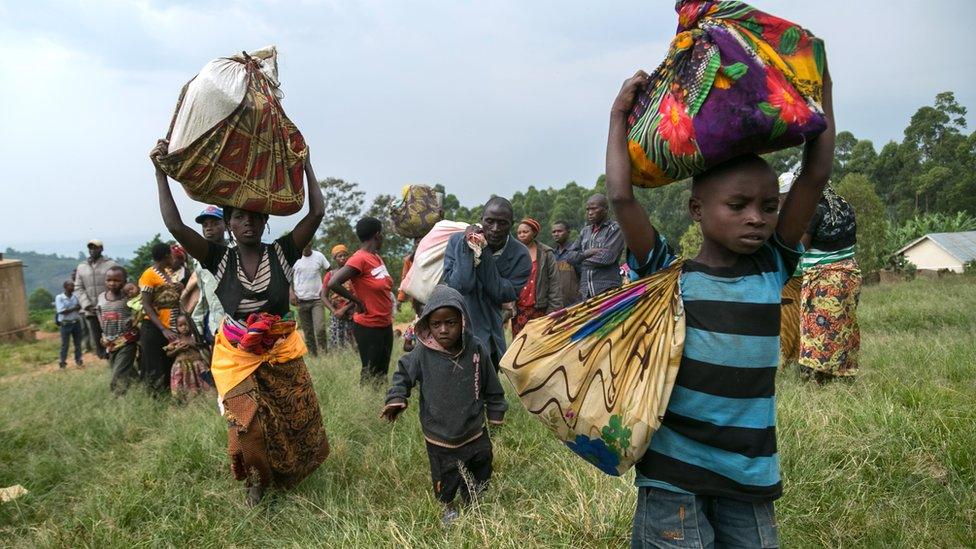
More than 35,000 people were forced to flee their homes every day in 2018 - nearly one every two seconds - taking the world's displaced population to a record 71 million.
A total of 26 million people have fled across borders, 41 million are displaced within their home countries and 3.5 million have sought asylum - the highest numbers ever, according to UN refugee agency (UNHCR) figures.
Why are so many people being driven away from their families, friends and neighbourhoods?
Devastating wars have contributed to the rise
Conflict and violence, persecution and human rights violations are driving more and more men, women and children from their homes.


In fact, the number of displaced people has doubled in the last 10 years, the UNHCR's figures show, with the devastating wars in Iraq and Syria causing many families to leave their communities.
Conflict in the Democratic Republic of Congo (DRC), Yemen and South Sudan, as well as the flow of Rohingya refugees from Myanmar to Bangladesh, have also had a significant impact.
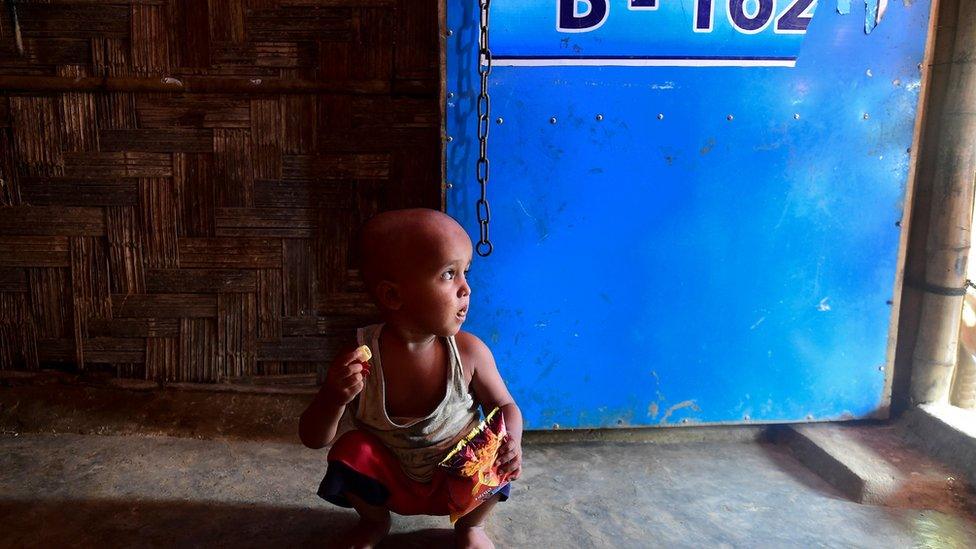
Are you someone who has been displaced? Email haveyoursay@bbc.co.uk, external.

Most do not become refugees
While much of the focus has been on refugees - that's people forced to flee across borders because of conflict or persecution - the majority of those uprooted across the world actually end up staying in their own countries.
These people, who have left their homes but not their homeland, are referred to as "internally displaced people", or IDPs, rather than refugees.
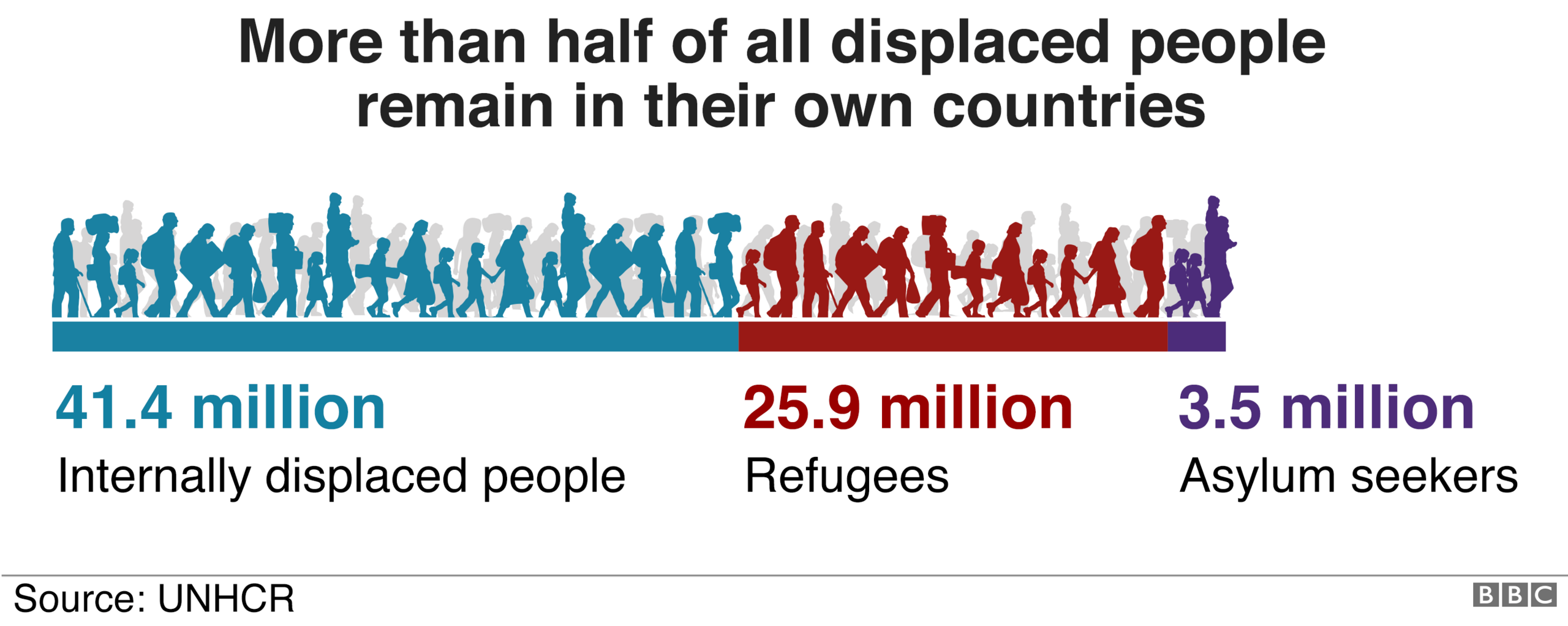
IDPs often decide not to travel very far, either because they want to stay close to their homes and family, or because they don't have the funds to cross borders.
But many internally displaced people end up stuck in areas that are difficult for aid agencies to reach - such as conflict zones - and continue to rely on their own governments to keep them safe. Those governments are sometimes the reason people have fled, or - because of war - have become incapable of providing their own citizens with a safe place to stay.
For this reason, the UN describes IDPs as "among the most vulnerable in the world".
Colombia, Syria and the DRC have the highest numbers of IDPs.
However, increasing numbers are also leaving home because of natural disasters, mainly "extreme weather events", according to the Internal Displacement Monitoring Centre (IDMC), which monitors the global IDP population only.
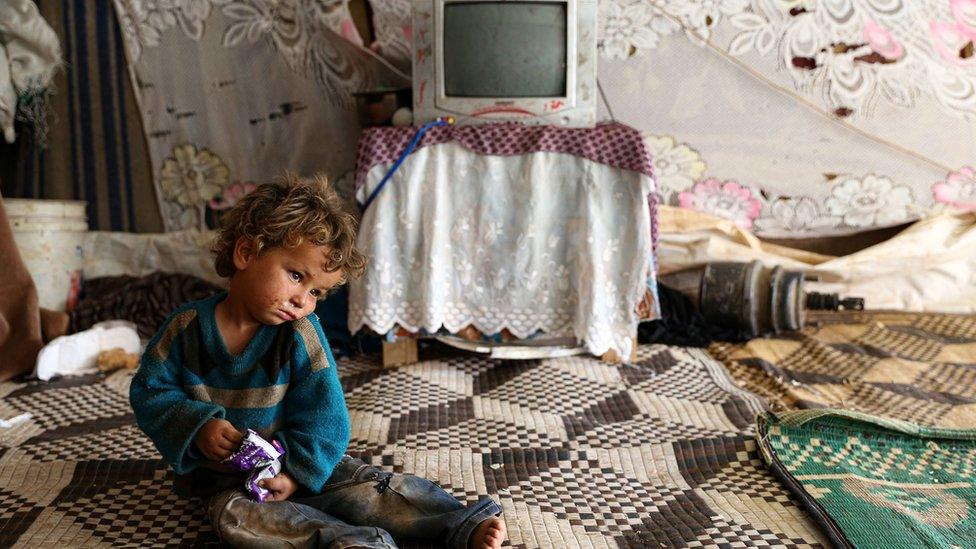
The next biggest group of displaced people are refugees. There were 25.9 million by the end of 2018, of whom about half were children.
One in four refugees came from Syria.
The smallest group of displaced people is asylum seekers - those who have applied for sanctuary in another country but whose claim has not been granted. There were 3.5 million in 2018 - fewer than one in 10 of those forced to flee.

Places hit by conflict and violence are most affected
At the end of 2018, Syrians were the largest forcibly displaced population. Adding up IDPs, refugees and asylum seekers, there were 13 million Syrians driven from their homes.
Colombians were the second largest group, with 8m forcibly displaced according to UNHCR figures, while 5.4 million Congolese were also uprooted.

If we just look at figures for last year, a massive 13.6 million people were forced to abandon their homes - again mostly because of conflict. That's more than the population of Mumbai - the most populous city in India.
Of those on the move in 2018 alone, 10.8 million ended up internally displaced within their home countries - that's four out of every five people.
A further 2.8 million people sought safety abroad as newly-registered refugees or asylum seekers.


Just 2.9 million people who had previously fled their homes returned to their areas or countries of origin in 2018 - fewer than those who became displaced in the same period.
The world's largest new population of internally displaced people are Ethiopians. Almost three million abandoned their homes last year - many escaping violence between ethnic groups.
The conflict in the DRC also forced 1.8 million to flee but remain in their home country in 2018.
In war-torn Syria, more than 1.6 million became IDPs.
Venezuelans topped the list of those seeking asylum abroad in 2018, with 341,800 new claims. That's more than one in five claims submitted last year.
Hyperinflation, food shortages, political turmoil, violence and persecution, have forced hundreds of thousands of Venezuelans to leave their homeland.
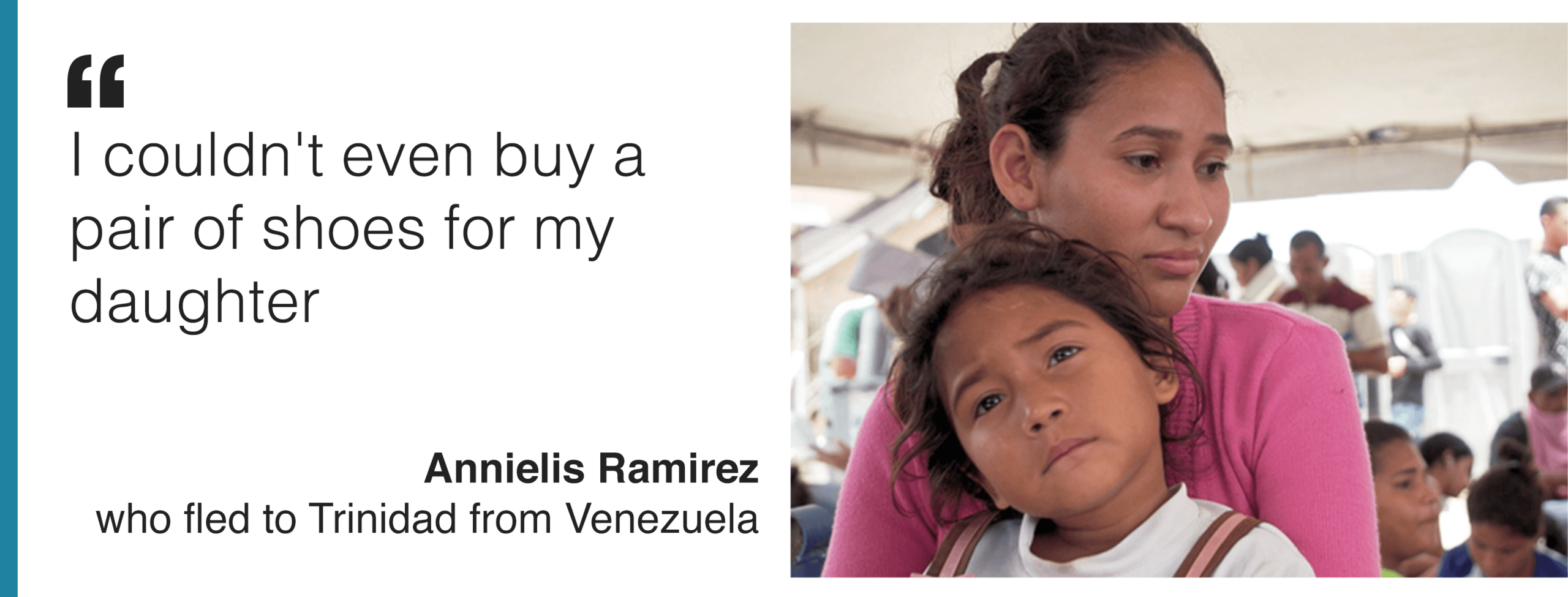
Most left for Peru, while others moved to Brazil, the US or Spain. More than 7,000 applied for asylum in neighbouring Trinidad and Tobago - just seven miles off Venezuela's coast - last year alone.
Annielis Ramirez, 30, is among the thousands of Venezuelans seeking a better life on the islands.
"All my family is in Venezuela, I had to come here to work and help them," she says. "I couldn't even buy a pair of shoes for my daughter. The reality is that the minimum salary is not enough over there.
"I'm here in Trinidad now. I don't have a job, I just try to sell empanadas [filled pastries]. The most important thing is to put my daughter through school."

Those driven from their homelands mostly remain close by
Almost 70% of the world's refugees come from just five countries: Syria, Afghanistan, South Sudan, Myanmar and Somalia, according to the UNHCR. And their neighbouring nations host the most.
Most Syrians have escaped to Turkey and more than half of Afghan refugees are in Pakistan.


Many South Sudanese go to nearby Sudan or Uganda. Those from Myanmar - the majority Rohingya refugees displaced at the end of 2017 - mainly fled to Bangladesh.
Germany, which doesn't border any of those countries with the largest outflows, is home to more than half a million Syrian and 190,000 Afghan refugees - the result of its "welcome culture" towards refugees established in 2015. It has since toughened up refugee requirements.
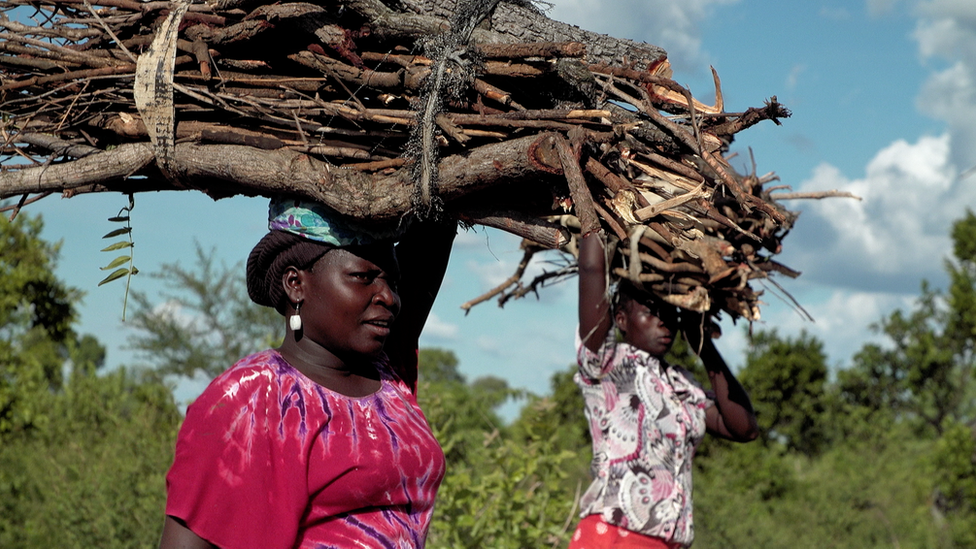
When assessing the burden placed on the host countries, Lebanon holds the largest number of refugees relative to its population. One in every six people living in the country is a refugee, the vast majority from across the border in Syria.
The exodus from Syria has also seen refugee numbers in neighbouring Jordan swell, putting pressure on resources. About 85% of the Syrians currently settled in Jordan live below the poverty line, according to the UN.
Overall, one third of the global refugee population (6.7 million people) live in the least developed countries of the world.

Many go to live in massive temporary camps
Large numbers of those driven from their home countries end up in cramped, temporary tent cities that spring up in places of need.
The biggest in the world is in Cox's Bazar, Bangladesh, where half a million Rohingya now live, having fled violence in neighbouring Myanmar.
The second largest is Bidi Bidi in northern Uganda, home to a quarter of a million people. The camp has seen many arrivals of South Sudanese fleeing civil war just a few hours north.
Bidi Bidi, once a small village, has grown in size since 2016 and now covers 250 sq km (97 sq miles) - a third of the size of New York City.
But what makes Bidi Bidi different from most other refugee camps, is that its residents are free to move around and work and have access to education and healthcare.
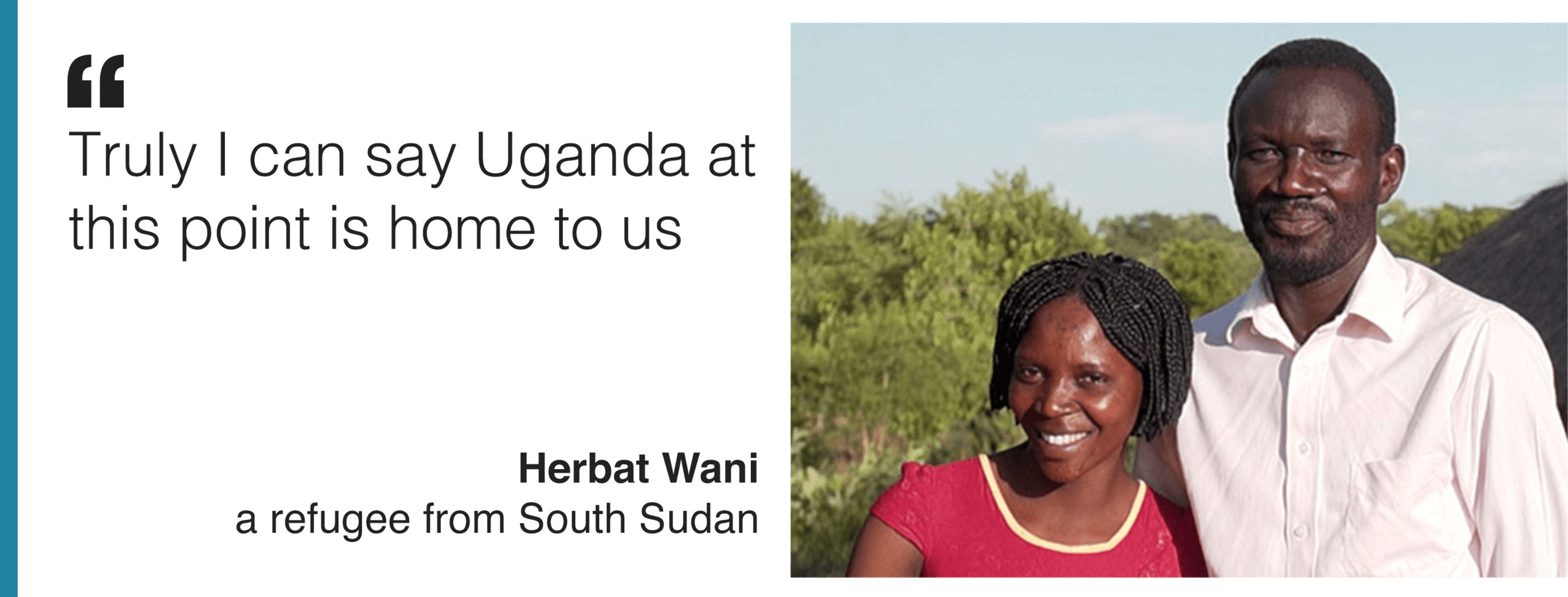
The Ugandan government, recognised for its generous approach to refugees, also provides Bidi Bidi's residents with plots of land, so they can farm and construct shelters, enabling them to become economically self-sufficient.
The camp authorities are also aiming to build schools, health centres and other infrastructure out of more resilient materials, with the ultimate aim of creating a working city.
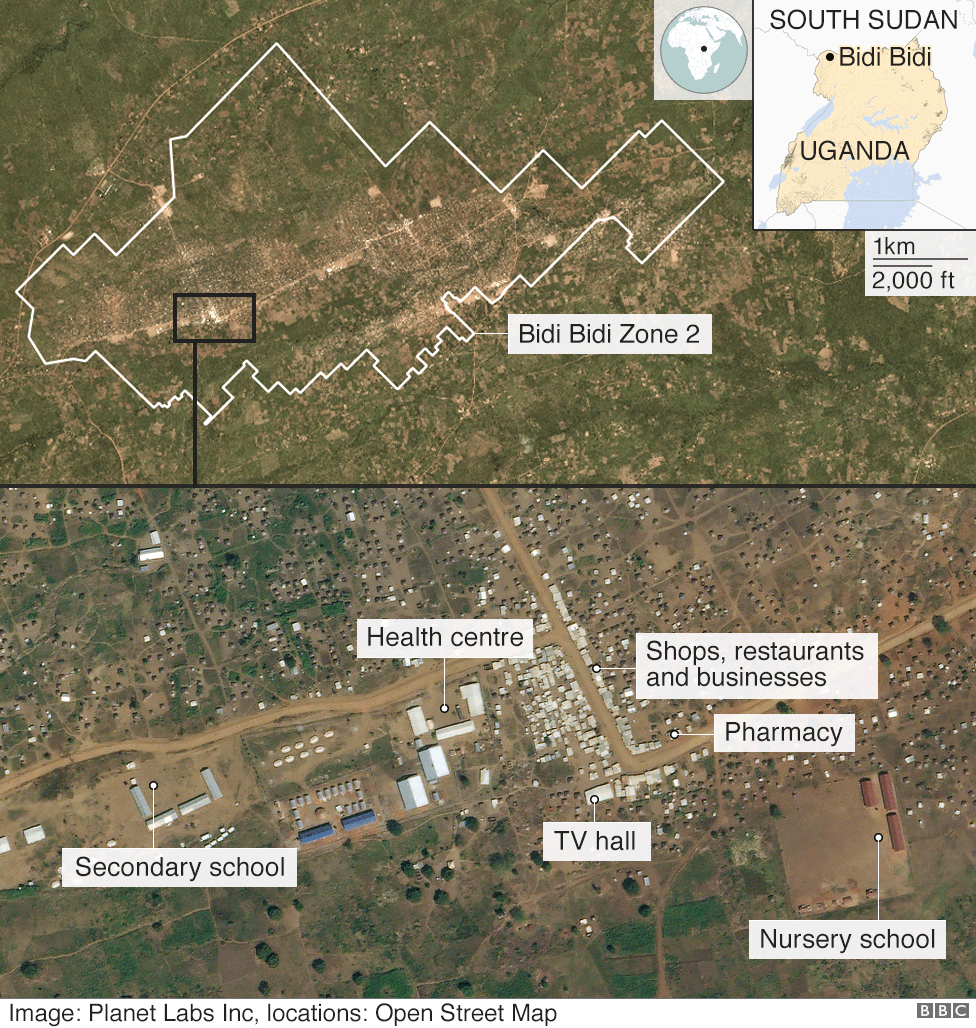

Among those living in Bidi Bidi are Herbat Wani, a refugee from South Sudan, and Lucy, a Ugandan, who were married last year.
Herbat is grateful for the welcome he has received in Uganda since fleeing violence in his home country.
"The moment you reach the boundary, you're still scared but there are these people who welcome you - and it was really amazing," he says. "Truly I can say Uganda at this point is home to us."
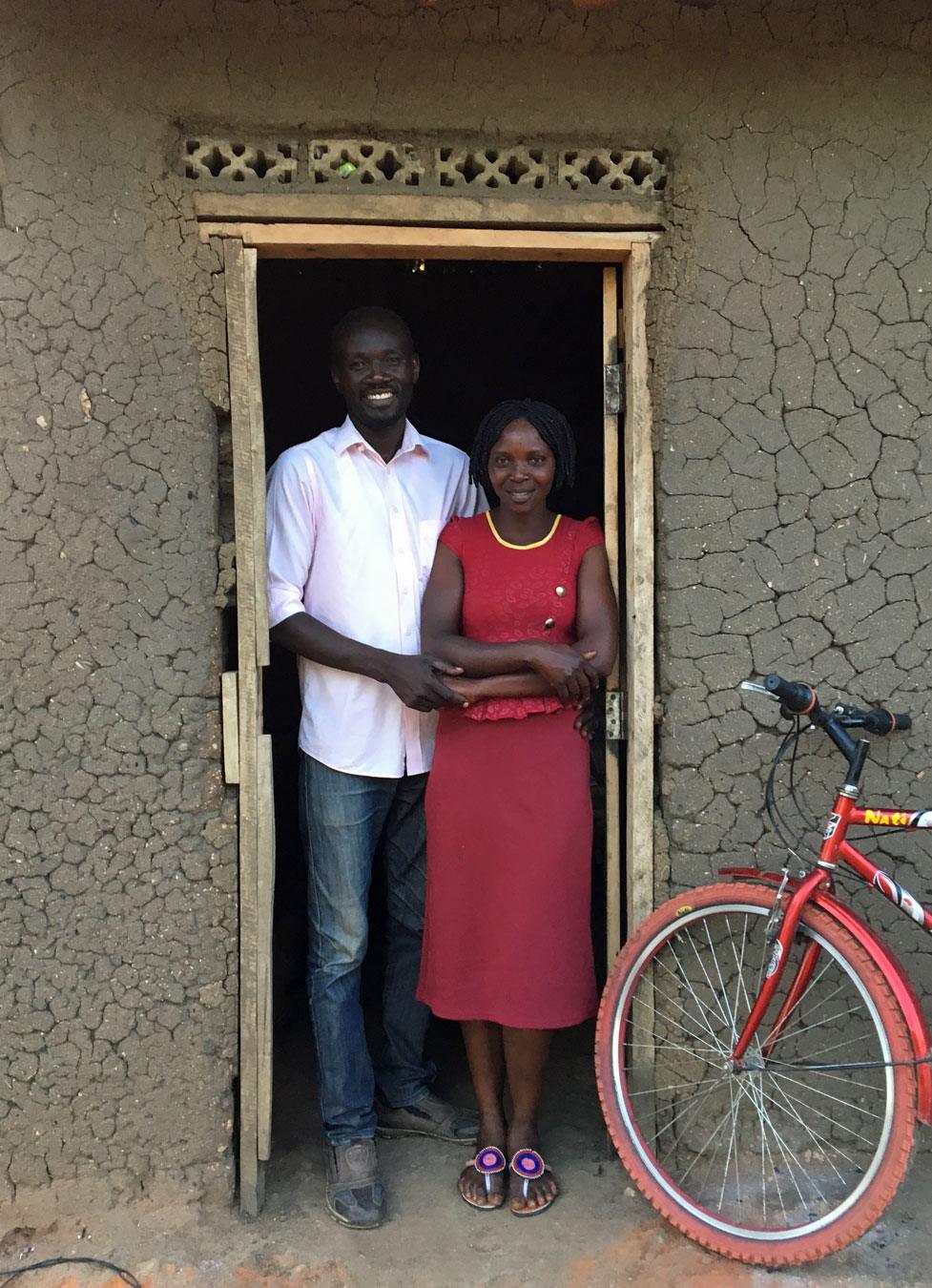

Lucy says she doesn't see Herbat as a refugee at all. "He's a human being, like me," she says.
However, despite the authorities' best efforts, a number of challenges remain at Bidi Bidi.
The latest report from the UNHCR notes there are inadequate food and water supplies, health facilities still operating under tarpaulins and not enough accommodation or schools for the large families arriving.

Displacement could get worse
Alongside conflict and violence, persecution and human rights violations, natural disasters are increasingly responsible for forcing people from their homes.
Looking at data for IDPs only, collected separately by the Internal Displacement Monitoring Centre (IDMC), natural disasters caused most new internal displacement cases last year, outpacing conflict as the main reason for people fleeing.
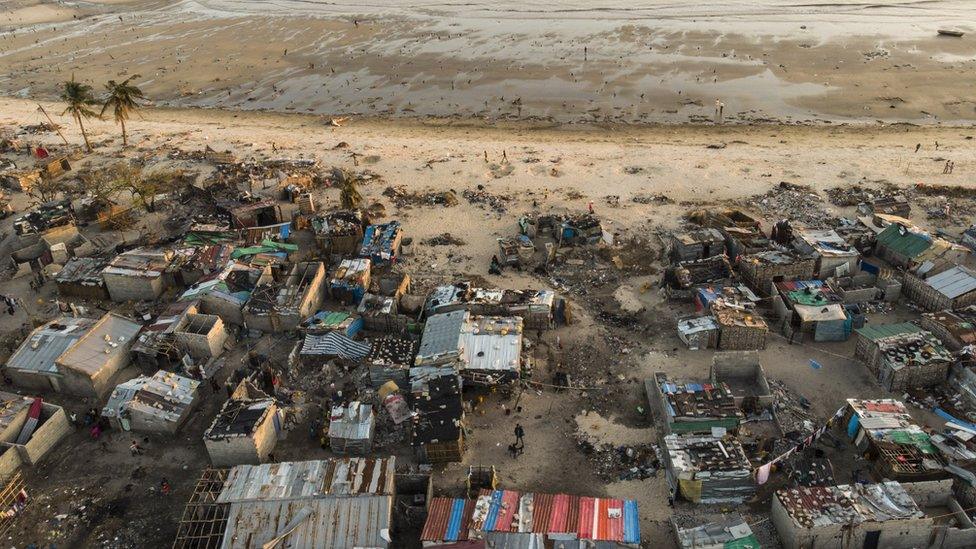
On top of the 10.8 million internally displaced by conflict last year, there were 17.2 million people who were forced to abandon their homes because of disasters, mainly "extreme weather events" such as storms and floods, the IDMC says.
The IDMC expects the number of people uprooted because of natural disasters to rise to 22 million this year, based on data for the first half of 2019. , external
Mass displacement by extreme weather events is "becoming the norm", its report says, and IDMC's director Alexandra Bilak has urged global leaders to invest more in ways of mitigating the effects of climate change.
Tropical cyclones and monsoon floods forced many in India and Bangladesh from their homes earlier this year, while Cyclone Idai wreaked havoc in southern Africa, killing more than 1,000 people and uprooting millions in Mozambique, Zimbabwe and Malawi.
Idai was "one of the deadliest weather-related disasters to hit the southern hemisphere", the World Meteorological Organization (WMO) said.
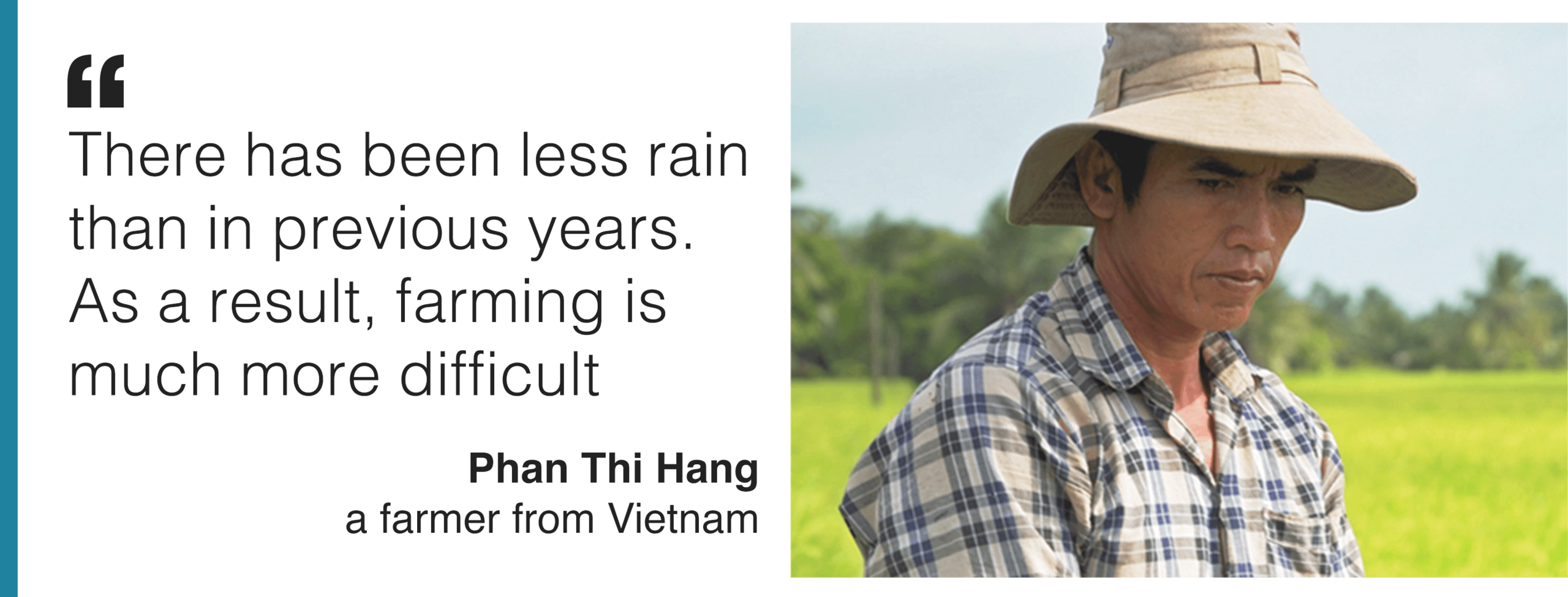
Although linking any single event to global warming is complicated, climate change is expected to increase the frequency of such extreme weather events.
The WMO warns that the physical and financial impacts of global warming are already on the rise.
Phan Thi Hang, a farmer in Vietnam's Ben Tre province, has told the BBC his country's changing climate has already had a "huge impact" on rice yields.
"There has been less rain than in previous years," he says. "As a result, farming is much more difficult.
"We can now only harvest two crops instead of three each year, and the success of these is not a sure thing."
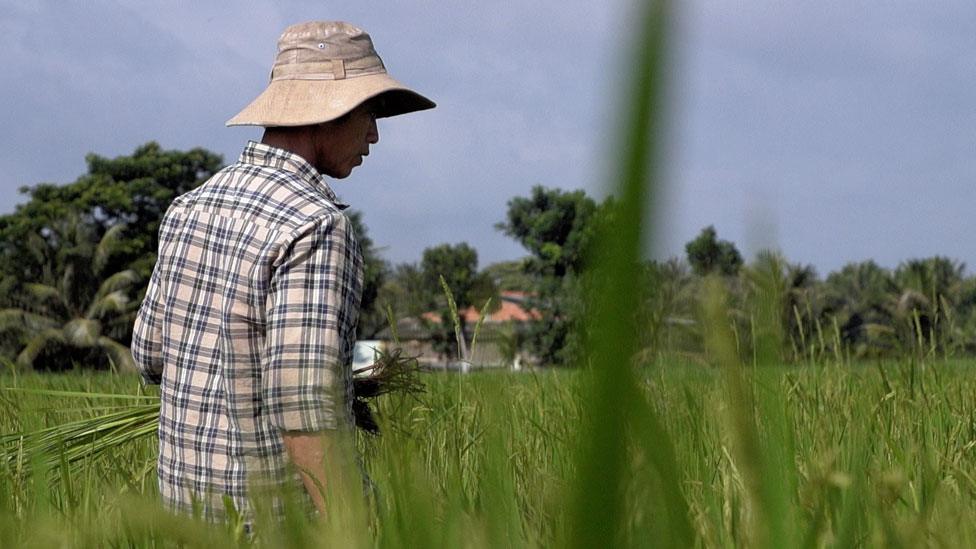
He says he and his fellow farmers now have to work as labourers or diversify into breeding cattle to make extra cash, while others have left the countryside for the city.
Like Phan's fellow farmers, many IDPs head to cities in search of safety from weather-related events as well as better lives.
But many of the world's urban areas may not offer people the sanctuary they are seeking.
Displaced people in cities often end up seeking shelter in unfinished or abandoned buildings and are short of food, water and basic services, making them vulnerable to illness and disease, the IDMC says. They are also difficult to identify and track, mingling with resident populations.
On top of this, some of the world's biggest cities are also at risk from rising global temperatures.


Almost all (95%) cities facing extreme climate risks are in Africa or Asia, a report by risk analysts Verisk Maplecroft has found.
And it's the faster-growing cities that are most at risk, including megacities like Lagos in Nigeria and Kinshasa in the Democratic Republic of Congo.
Some 84 of the world's 100 fastest-growing cities face "extreme" risks from rising temperatures and extreme weather brought on by climate change.
This means that those fleeing to urban areas to escape the impact of a warming world may well end up having their lives disrupted again by the effects of rising temperatures.
By Lucy Rodgers, Nassos Stylianou, Sean Willmot and Clara Guibourg. Interviews on location by Ashley John-Baptiste, Olivia Lace-Evans and Rachael Thorn.

You may also be interested in...
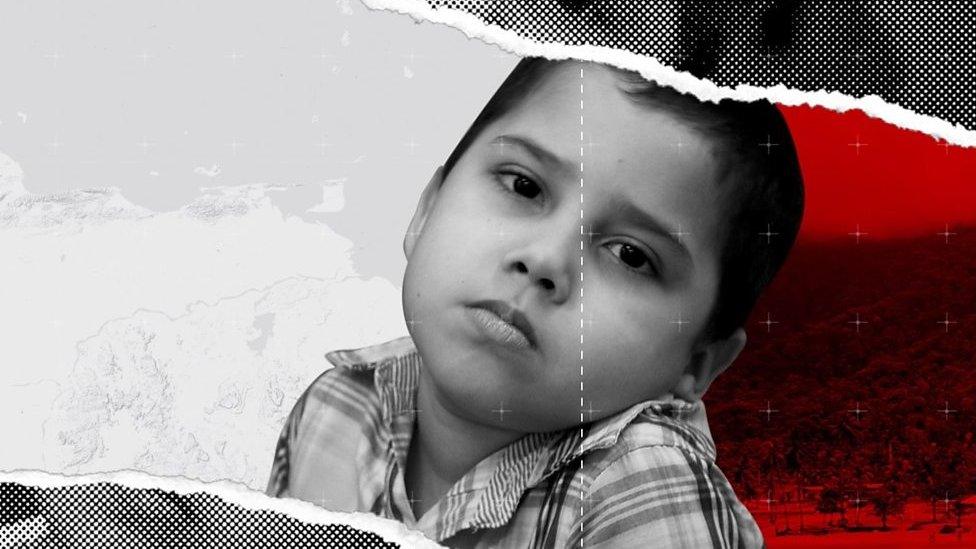
Four million people have fled Venezuela and 40,000 of them have headed to the small Caribbean islands of Trinidad and Tobago, which are just seven miles off the Venezuelan coast.